An iconic Dundee landmark, the Hilltown Clock has stood proudly at the top of one of the city’s steepest streets for 120 years.
Erected in 1900, at the Strathmartine Road junction, it was a welcome stop-off point for generations of weary parents who told their kids – “awa an see the time oan the Hulltoon clock!”
The famous clock was gifted to the community by Sir Charles Barrie, a former Lord Provost who had represented the Coldside area on the council.
It became fondly known as Barrie’s Clock, although few people are aware of this alias today.
Over the years, the clock and its tower have undergone a series of face-lifts, changing from its original purple to orange in 2017.
Clockwork
Designed by burgh engineer William Mackison, the Hilltown Clock was made by iron founders Beath and Keay and fitted up by clockmaker GD Rattray of Nethergate.
In 1901, it was said to have been “much enhanced” with the addition of a couple of ornamental lamp brackets although these were later removed.
A wind up
A report in The People’s Journal in 1955 said that the Dundee Corporation was responsible for eight clocks in the city.
They were: the Old Steeple, Hilltown clock, Wallacetown Church clock, St Andrew’s Church, Dudhope Church, Westport clock, St Peter’s, Perth Road, and Lochee East Church.
“The Hilltown clock must be wound twice a week, all the rest once a week,” it stated.
The best timekeeper in the city was said to be the Dudhope clock which “loses only half a minute a month”.
The oldest was the Old Steeple clock, installed in 1862.
The kilted clockwinder
The man responsible for keeping the clocks going was a William Robertson Reid, who owned a watchmaker’s business in Lochee.
“Kilted and on his bicycle, he checks each clock every week,” the People’s Journal report stated.
“He’s been town clockwinder since Mr Jack Herbert died in 1951.
“Mr Herbert had a magnificent beard…had the history of every clock off by heart. Mr Reid was one of his last apprentices.”
Who was Sir Charles Barrie?
Born in Airlie Park, West Ferry, in 1840, Sir Charles Barrie was one of Dundee’s most honoured sons and a former Lord Provost of the city.
He died aged 81 on February 28 1921.
On that day, The Dundee Courier reported that Sir Charles was a “Dundee laddie” who, as a mere youth, went to sea as an apprentice on board the Dundee ship, Sutlej, which was engaged on transport service during the Crimean War.
His obituary said his death “removes a remarkable personality from our midst”, and described him as a “typical mariner, with a dash of the quarterdeck manner softened by breezy good humour”.
He was said to have had a “kindly and generous disposition, and old sailors and their dependents had in him a true-hearted friend”.
Having studied law, Barrie went on an extensive tour of the world and then settled down into a mercantile career, joining his father in the shipping business.
He was widely known as Captain Charles Barrie for the sea was his profession.
At an early age, he took command of Indian liners.
In time he became a master mariner, and for 25 years was engaged in the Indian trade.
When the Suez Canal opened in 1869, Captain Barrie left the ships for the steamers.
Once again he was in the Indian trade, but in 1880 he commanded the City of Venice, in which Sir Garnet Wolseley and his staff went out to South Africa at the time of the Zulu War.
For nearly a year, Captain Barrie kept guard along the African coast in charge of the flagship.
Early in the 1880s, he gave up the sea and settled in Dundee, becoming managing owner of a successful fleet of ships and steamers.
In 1898, he was elected a representative to the Town Council by the Seventh Ward electors.
In 1902, he became Lord Provost – the highest honour his native city could bestow upon him. This post lasted until 1905.
On his retirement, he was presented with his portrait as a mark of the esteem in which he was held by the community.
He was knighted in 1918.
Gifts
As well as presenting the Hilltown clock to the Dundee community in 1900, Sir Charles gifted Coldside branch library.
He had been born in the area and the site of the library formed part of his family’s property.
He also gifted a powerful telescope for the use of visitors on the Law Hill.
However, his “most magnificent gift” was said to have been the donation in 1918 of £5,000 to establish the Charles Barrie Fund for Aged Seamen.
This gifted payments to deserving aged and disabled seamen who were natives of Dundee and Tayport.
“Illuminated by gas jets”
The Dundee Year Book of January 1901 describes the Hilltown clock’s column as being of the “Ionic order” with sunk moulded panels on each side and a double base.
It said: “The height of the column above the footway is 18 feet and it supports a public clock, having two illuminated dials about four feet in diameter securely fixed together by a metal drum, resting on and secured to suitable brackets cast on top of the capital.
“Each dial is surmounted by the Dundee coat of arms.
“At night the dials are illuminated by gas jets, which are turned on and off by the works of the clock.
“On the panel of the base, facing Hilltown, there is a bronze shield bearing the following inscription: ‘Presented to the community of Dundee by Charles Barrie, one of the municipal representatives of the Seventh Ward – December 1900.’”
Repairs
It’s perhaps no surprise that the clock has broken down a good few times in its 120 year history.
It was mechanically overhauled and fitted with a new electric motor in 1986, and after a few teething troubles, continued to serve the Hilltown community.
The clock underwent repairs and enjoyed a face-lift in September 1989.
Repair work in 1994 was hampered after vandals climbed up scaffolding and bent one set of the clock’s hands, twisting them away from the clock face.
It was again refurbished in 2006 as part of a renewal project of the Hilltown area.
A photo from the early 1900s shows there was an underground gents toilet beside the clock. These were demolished and filled in in March 1979.
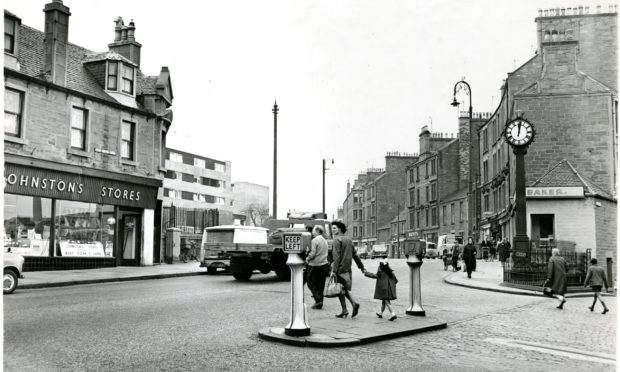
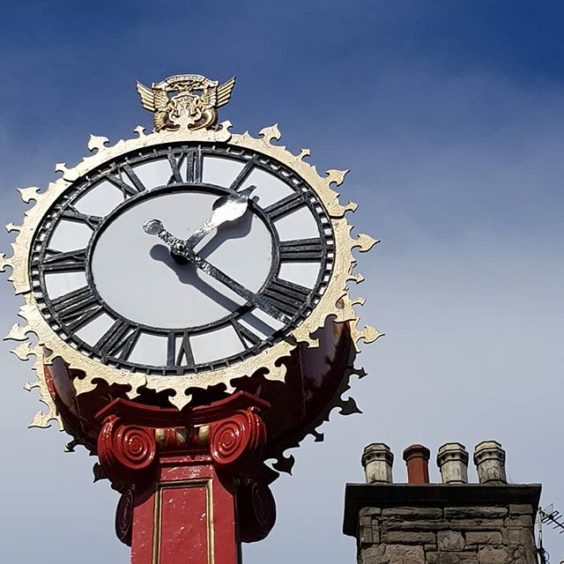
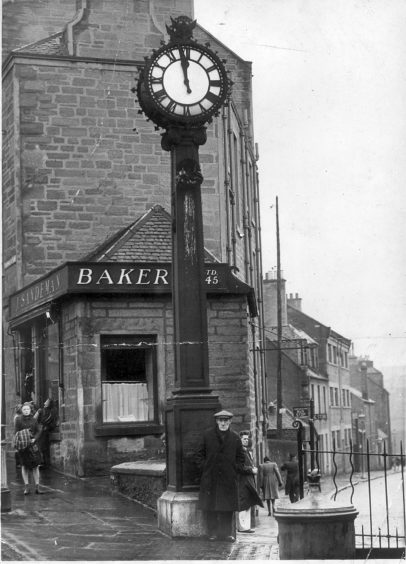

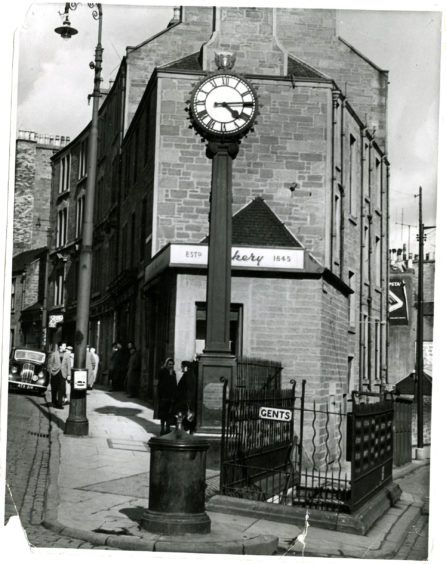
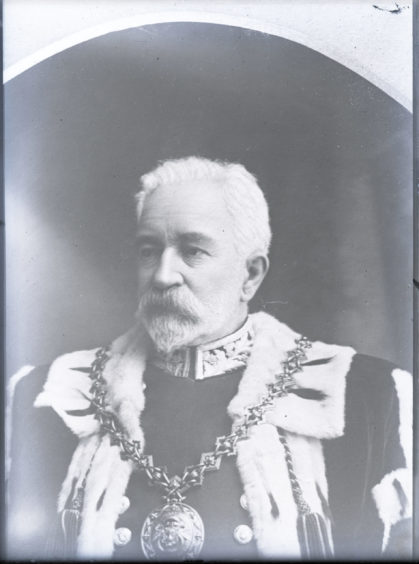
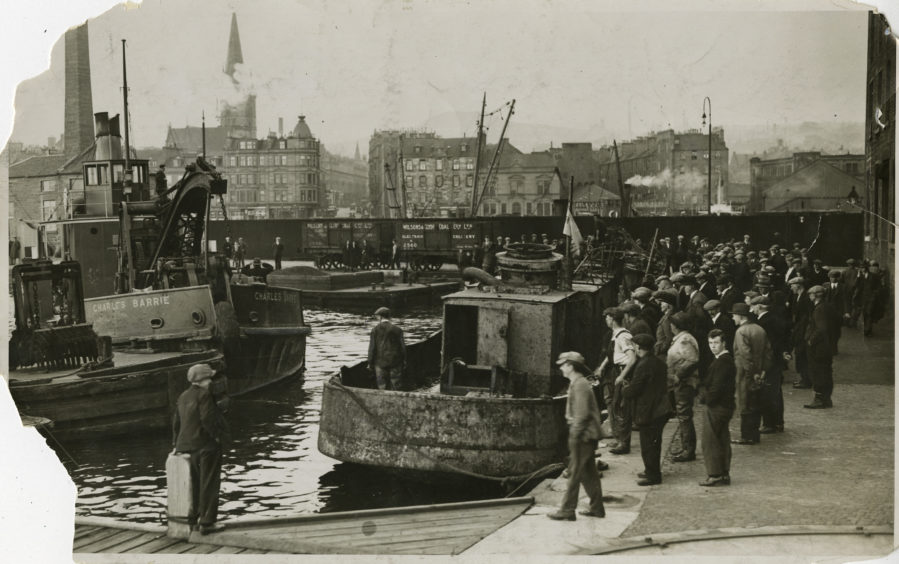
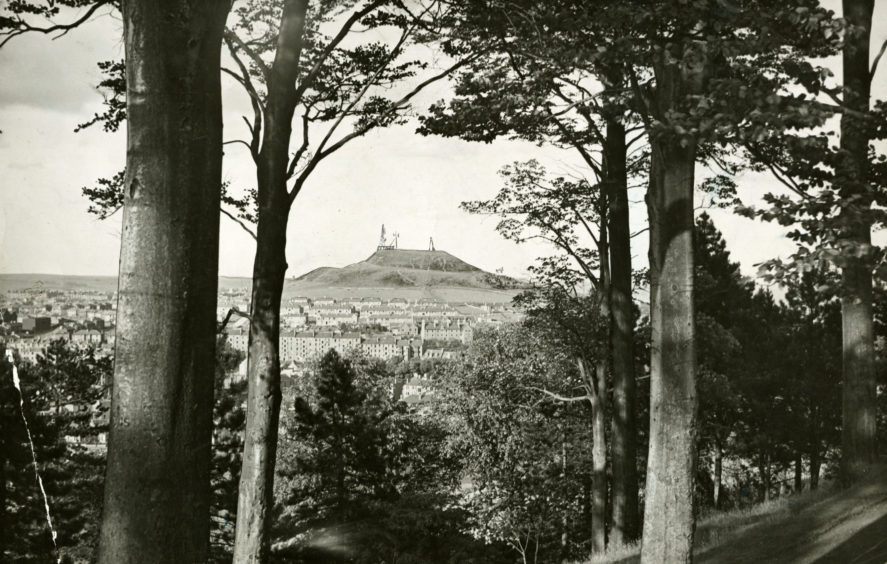
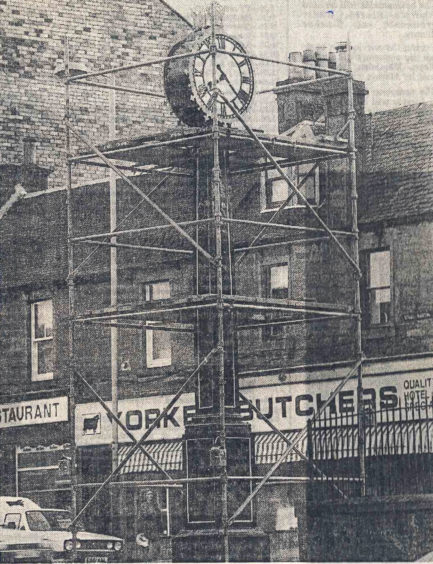
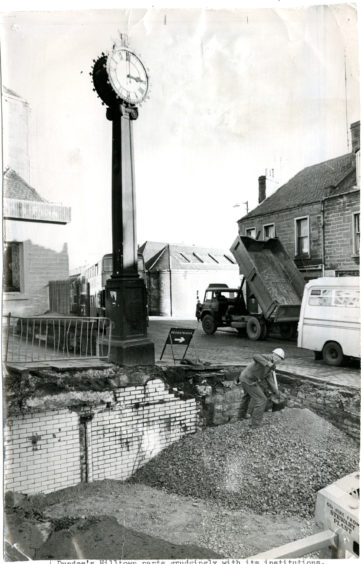










Conversation